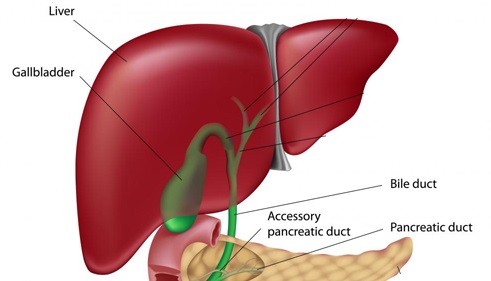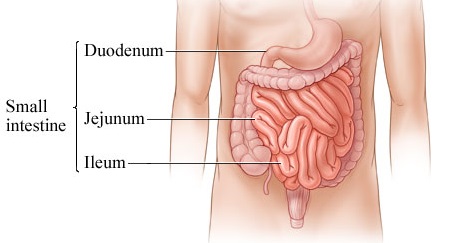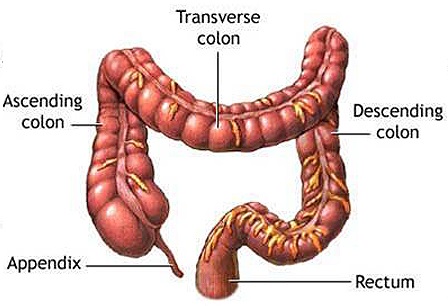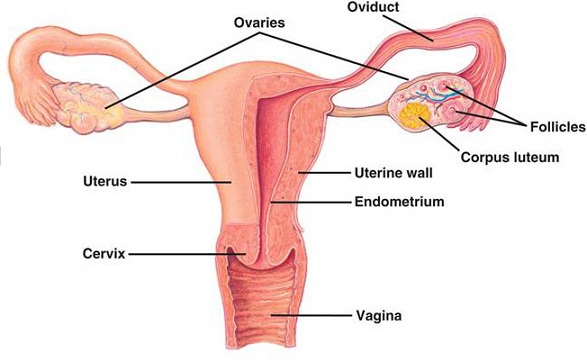In the human body, organs can be divided into those that reside on the left side of the body and those organs that are on the right side. Many people are concerned about right side pain, but what organs are involved? This is what this article will focus on so you will be able help identify the source of right-sided pain.
9 Right-Sided Organs
Some organs are exclusively on the right side while others are located on both the right and left sides of the body.
1. Right Breast
The right breast is one of a set of breasts on either side of the body. It consists of milk ducts and lobules, which are actually modified sweat glands.
Function: The main purpose of the right breast in woman is to make human milk to feed a baby up until the age of about one year.
2. Right Lung
What organs are on the right side? The right lung can never be missed. By height, the right lung is a bit smaller than the left one by 5 cm. However, it does not have to contend with the heart, so it is larger than the left lung by volume. It consists of three different lobes, the superior, middle, and inferior lobes of the right lung.
Function: The purpose of the right lung is to protect the right side of the heart and to assist in air exchange, exchanging oxygen we need for cellular metabolism with carbon dioxide, a waste product of metabolism. It also helps to control the pH of the blood by hanging onto carbon dioxide or blowing it off.
3. The Right Kidney
We each have a pair of kidneys, which are shaped like kidney beans. Because the abdominal space is asymmetric, the right kidney is located a bit lower and is a bit smaller than the left kidney. It is located in the back, near the spine but is located more centrally when compared to the left kidney.
Function: The kidney is the main organ of excretion of urine. It is also responsible for balancing and absorbing electrolytes and nutrients into the body, and for helping maintain the pH of the bloodstream.
4. Liver
What are the organs on the right side of the body in the abdomen? One of them is the liver which has a reddish-orange color and is located mainly on the right side in the right upper quadrant of the abdominal cavity. The total weight of the liver is about three pounds which makes it the largest organ of the abdominal cavity. Liver is divided into four separate, but unequal lobes.
Function: The main functions of the liver include enzyme secretion which aids in the digestion of food, particularly fat. It stores glucose  and releases it when the blood sugars are too low. The liver also filters all blood coming out of the GI tract and then passes the blood onto the rest of the body after metabolizing drugs and detoxifying chemicals we ingest. The liver helps make clotting factors necessary for blood clotting and secretes bile for use in fat digestion.
and releases it when the blood sugars are too low. The liver also filters all blood coming out of the GI tract and then passes the blood onto the rest of the body after metabolizing drugs and detoxifying chemicals we ingest. The liver helps make clotting factors necessary for blood clotting and secretes bile for use in fat digestion.
5. Gallbladder
Another answer to "What organs are on the right side?" is the gallbladder. The gallbladder is tucked beneath the liver and is of varying sizes depending on how much bile is stored within it. There are three parts to the gallbladder, the body, fundus, and neck of the gallbladder.
Function: The gallbladder's main function is to store bile originally made by the liver. In the gallbladder, the bile is concentrated before being sent to the intestines for fat digestion. Even though the gallbladder has a function, nothing happens to us if it is removed.
6. Small Intestine
At least half of the small intestine is located on the right side of the abdominal cavity. It can be
as short as 15 feet (4.6 meters) and as long as 32 feet (9.8 meters). It consists of the first part which is the duodenum, the second part which is the jejunum, and the last part which is the ileum.
Function: The main function of the small intestine is to connect the stomach to the colon. It is also responsible for digestion of food and absorption of the end products of digestion into the bloodstream. The small intestine needs enzymes from the pancreas as well as the bile form the liver in order to function.
7. Colon
The colon is made from the ascending colon, the transverse colon, the descending colon, and the sigmoid colon. The ascending colon and a portion of the transverse colon are located on the right side of the abdomen. It is the final part of the human digestive tract.
 Function: The purpose of the colon is to remove water and salt from the stool before elimination from the body. It also contains a large quantity of bacteria that help in the metabolism of unabsorbed food material.
Function: The purpose of the colon is to remove water and salt from the stool before elimination from the body. It also contains a large quantity of bacteria that help in the metabolism of unabsorbed food material.
8. Appendix
Appendix is another answer to "What organs are on the right side?". It is a small tube that extends off the end of the cecum in the right lower quadrant of the abdomen. It is about 9 cm long but can be as short as 2 cm or as long as 20 cm.
Function: The actual function of the appendix is unknown but some scientists believe it acts as a reservoir for the healthy bacteria of the intestinal tract, adding good bacteria to the system after an attack of diarrhea. It can be surgically removed without any noticeable health issues.
9. Ovary
Humans have a pair of ovaries located at the left and right side of lower back, which is the ovum-producing reproductive organ in woman. The ovary is whitish and about 4 x 3 x 2 cm in size. It is linked to the uterus by ovarian ligament, a fibrous cord.
Function: Ovary is responsible for producing and releasing eggs which mature in the follicles. It  also produces progesterone, testosterone and estrogen, which are important in developing female sex characteristics, regulating menstruation and getting pregnant.
also produces progesterone, testosterone and estrogen, which are important in developing female sex characteristics, regulating menstruation and getting pregnant.
14. Fallopian Tube
The fallopian tubes, or uterine tubes, are 2 thin, 10 cm-long tubes connecting ovaries and uterus.
Function: This tube carries matured egg cells from the ovary to the uterus during ovulation for fertilization. Sometimes the egg may get fertilized in fallopian tube, which means ectopic pregnancy happens.
10. Other Organs on the Right Side
What organs are on the right side above the abdomen? Here are the answers:
- Skin: The skin is the largest organ of the body and is located all of the body. The skin's surface area is about 1.2-2.0 meters squared and it is usually about 2-3 mm in thickness. The main function of the skin is protecting the body from pathogens and sunlight, and eliminating waste from the body. It is responsible for sensation and helps regulate body temperature in the form of sweating which is vital for human beings.
- Right Brain: The right brain weighs about 1.5 pounds and consists of the right hemisphere of the brain. It is responsible for the individual's ability to express creative thoughts, perceive audio and visual stimuli, and have imagination. The right brain controls the motor skills on
the left side of the human body, while the left side of the brain controls the motor skill on the right side of the body. If you damage the right side of the brain, it is the left side of the body that suffers the deficit.
- Right Eye: The right eye is located in the right orbital fossa. It is about the size of a walnut and connects to the brain by means of the right optic nerve. Inside the right eye is aqueous humor that gives it its shape. The right eye is responsible for picking up light waves and using the brain to convert the waves into moving pictures we see all the time. The right eye is also responsible for our right lateral visual field.
- Right Ear: The right ear or auricle gathers sound and sends it to the right tympanic membrane, where sound waves are then sent to right inner ear and to the brain, where they are interpreted as sounds we understand. The right ear is primarily concerned with picking up sounds located on the right side of the body but if you happen to be deaf, your left ear will pick up the slack and will do the work of the malfunctioning right ear. You will just hear less and may need a hearing aid.
